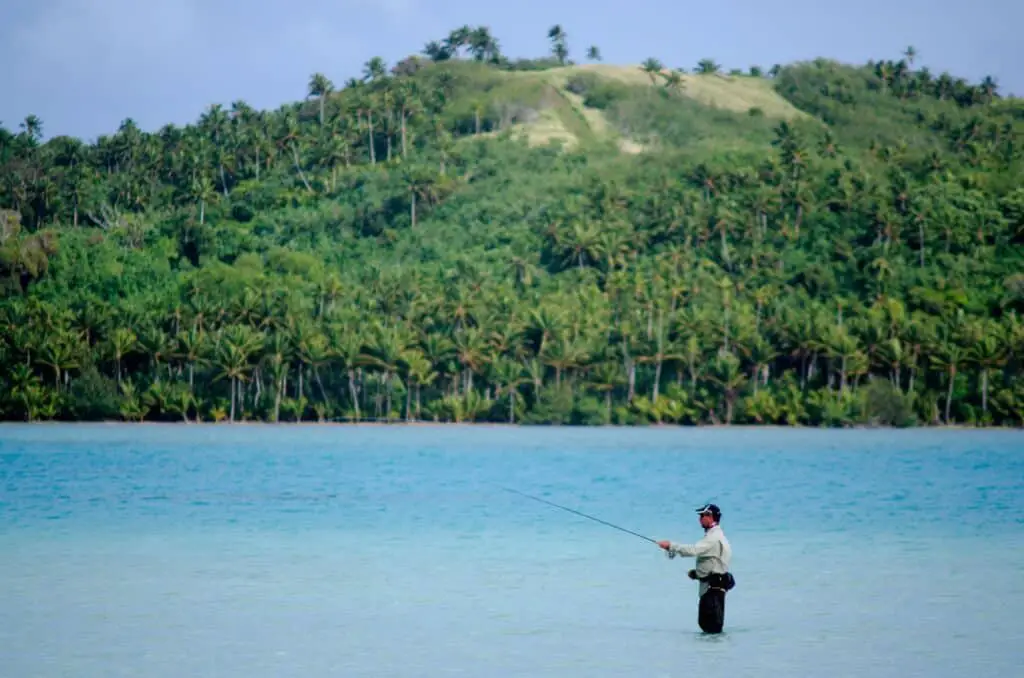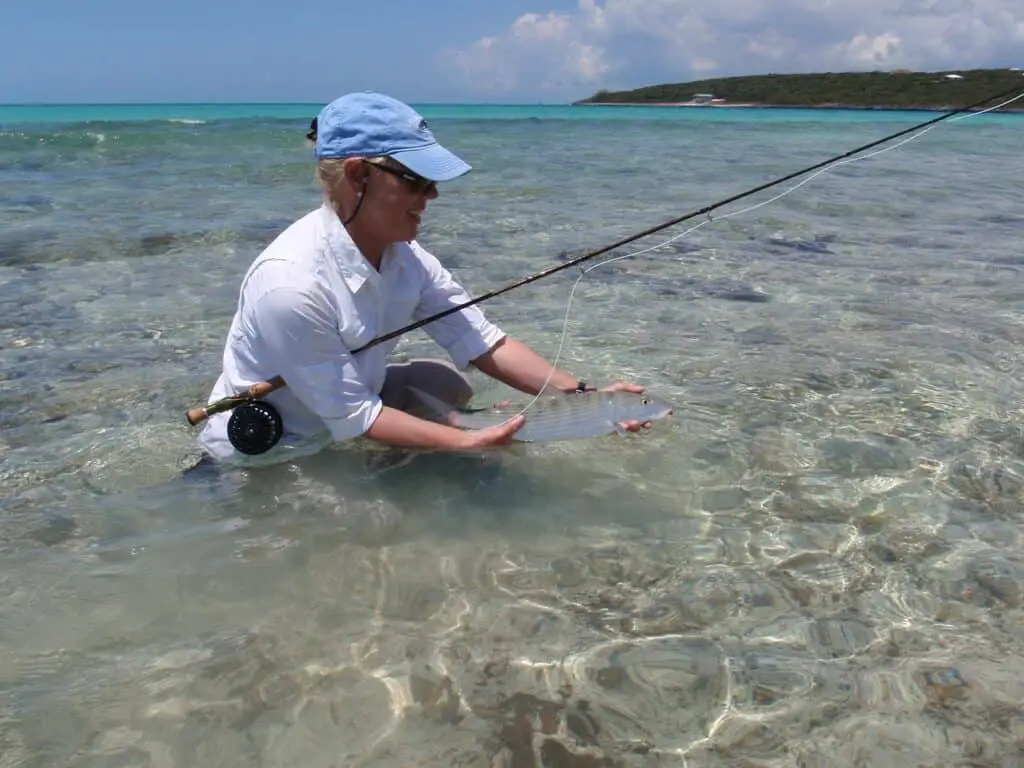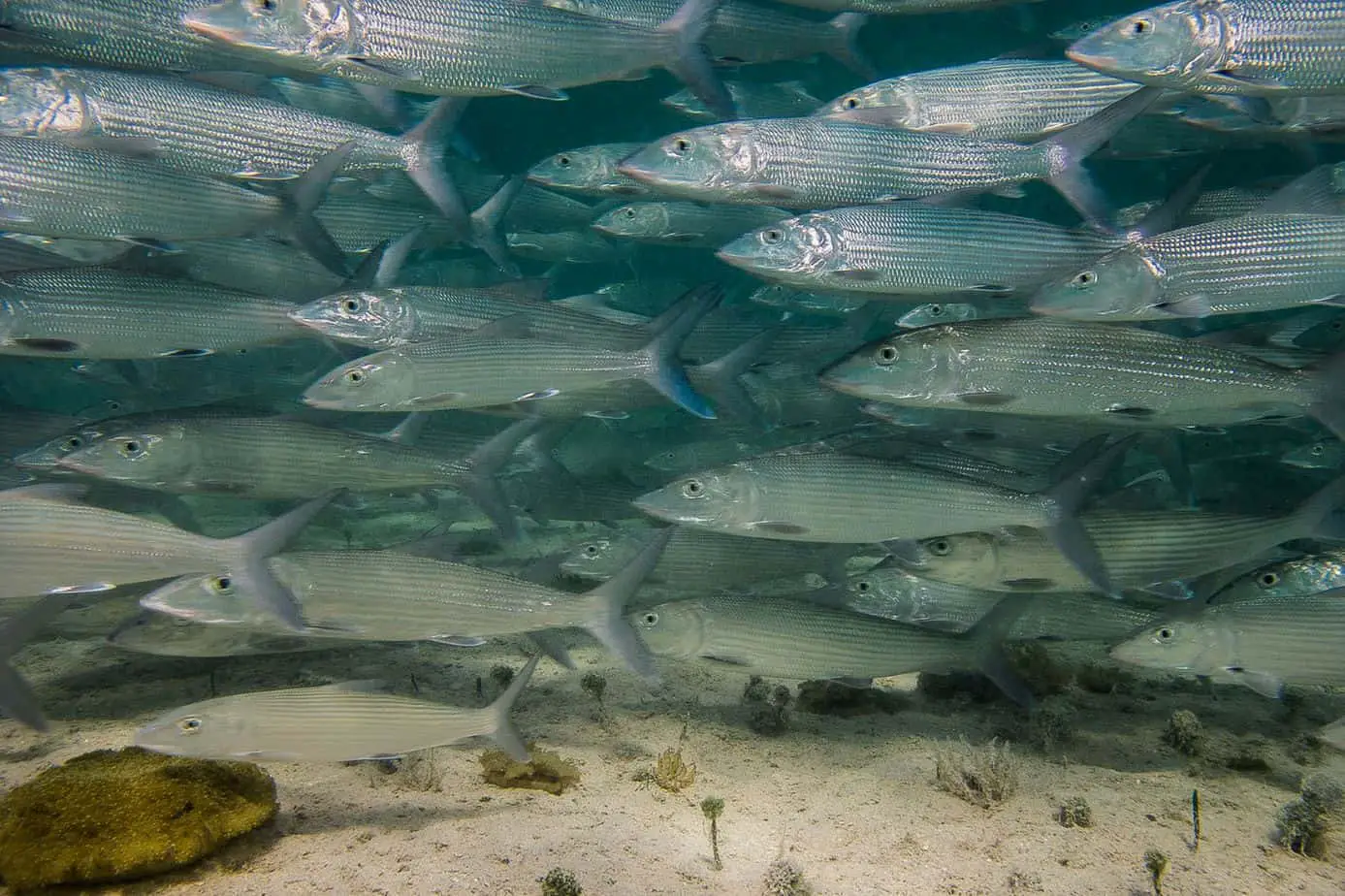What is a bonefish? Bonefish are native to Florida, the Bahamas, and Bermuda but can be found in many tropical climates. They are not huge fish but are sought after in the fishing world due to their incredible fighting abilities. Their wariness and silver appearance means anglers often refer to them as ‘The Grey Ghost.’ They are not usually seen as a culinary delight and mostly are fished catch and release, but are bonefish good to eat?
The simple answer is yes; they can be eaten, but not without some care. The first clue is in the name. Bonefish are so full of bones that eating them is tricky. Also, their diet and feeding habits mean that they can contain toxins. In saying that, indigenous people have been feasting on this fish for generations, the key to eating this fish is preparation.
Due to their particular diet, the fish contains marine microalgae, which can cause poisoning if eaten. So, knowledge is the key if deciding to eat this fish. Care and attention are required if you want to sample the taste of Bonefish, but for those willing to put the effort in, the results can be sumptuous.
The Best Way to Eat Bonefish
Preparing Bonefish
Cure your fish overnight in a refrigerator, as this is important to the preparation process. It is tough to prepare a Bonefish straight from the water.
First, descale the back of the fish and remove the head. Rinse under running water before slicing along the underbelly and removing the guts. There can be fat deposits in the cavity, which should also be removed. Once done, the carcass should be rewashed.
Place belly side down to fillet the Bonefish. Then make a cut following the ribcage all the way to the edge of the fish but not all the way through. You should be able to open the fillet section up so you can spoon out the meat, then you scoop along the skin removing all the meat. Repeat on the other side of the fish.
Cooking Bonefish
Though some western anglers do not recommend eating this fish, Hawaiian islanders enjoy the flaky white meat in various ways.
Patties or fishcakes are one way to cook and enjoy this fish. Ginger and garlic are wonderful ingredients for patties, as are scallions or onion. If you do not have any scallions and oyster, Worcester, or soy sauce, add that extra flavor. Bind the fish with egg and roll in flour. Shape into the size required and fry.
Ceviche or Poke is a classical way of making a tasty meal with Bonefish and using lime juice to cure the meat, then adding spices, onion, and avocado. The recipe for Ceviche in different cultures vary.
A fish soup is another way of cooking the Bonefish, you can use the head for the stock, but most people just discard this.
Cooking the whole fish is not advised due to the sheer number of bones in the fish.
Eating Bonefish
Ceviche can be eaten as an appetizer or enjoyed as a main meal by adding sweet potato, baked banana, and salad, which complement the dish.
If you are eating Bonefish, you are likely to be in warmer climes. Cool drinks always work!
But do be aware of the bones.

Other Noteworthy Information
Clupeotoxin poison happens in fish that eat plankton and are bottom feeders. Clupeotoxin poisoning can occur with Bonefish. It does not dissipate when the fish is cooked.
Facts About Bonefish
Perhaps this isn’t a fish that many anglers will savor the flavor of. However, that shouldn’t detract from the fact that it is still one of the most sought-after gamefish in the states. It is as a sportfish and not a table-fish that this species shows its colors. Let’s have a look at some interesting facts and figures about this beautiful fish.
- Size and Weight – Adult bonefish measure in the range of 16 to 40 inches and, on average, weigh between 6 to 8 pounds, although they can grow up to around 16 pounds. These weights and sizes apply to the western hemisphere bonefish as there are also populations on the African continent, here larger fish than this is possible.
- Long-lived – Bonefish can live up to 20 years in the wild and don’t reach sexual maturity until they are between 2 and 3 years old.
- Super Fast – Shaped like a torpedo, these fish are built for speed. Anglers really don’t want to spook this fish. With the ability to reach speeds of 40mph, it will be long gone before you even think about casting at it. Stealth is vital when angling for bonefish.
- USA Record Fish – A 16 pound 3-ounce bonefish caught in the Florida Keys on March 19th, 2007 by Bob Schroeder is the current US record Bonefish. However, for world records, you have to look over the Atlantic to South Africa, where larger fish are regularly caught, although it is difficult actually to pin down the actual world record fish of 19 and 20 pounds have been recorded.
- Mystery Fish – There is still much science doesn’t know or understand about bonefish, including basic information about their distribution and life cycle. For instance, the most common species found in Florida and the Caribbean are classified as Albula vulpes. In 2003, the Mote Marine Laboratory found that the vast majority of juvenile fish in Florida were of the separate subspecies, Albula Garcia. This raised the question, where are all the Albula Vulpes Juveniles?
- What do bonefish eat? – Bonefish are carnivores and bottom feeders. They feed primarily in shallow waters, generally mudflats, and feed on crabs, shrimp, worms, snail, and small fish. Although they do tend to shoal, when feeding, they will normally break into smaller groups.
- Distribution – In the Western Atlantic, Bonefish are prevalent in the Gulf of Mexico, the Southern Florida Coast, Caribbean Sea, and as far south as northern regions of South America.
Bonefish Fishing Tips and Techniques
As we noted earlier, this fish spooks easily, and once this occurs, it is gone! So, no matter what methods you use to approach angling for this fish, make sure you approach it with stealth. When angling for bonefish, this is the most critical piece of advice there is.
Most bonefish angling is done by sight, stalking your prey. Bonefish tend to show themselves when feeding by their ‘Tailing.’ This occurs when bonefish are feeding in shallow waters and are using their unique snouts to dig for food. This can be one of the most exciting sights in angling. Coming across a group of tailing bonefish can really get the heart rate going. This is where it pays to have a calm head to maintain that stealthy approach.
How to Approach Tailing Bonefish
If you happen across a group of tailing bonefish, many anglers’ instincts are to cast their bait, lure, or fly into the middle of the group. All this will produce a group of spooked fish hundreds of yards away before you even realize your mistake.
The trick is to carefully work the edges of the group, if possible, targeting specific fish. Because of their skittery nature, casts need to be delicate and precise. Stalking and catching a bonefish can rightly be called an angler’s rite of passage!
Watch The Tides
Most success comes during the low tides at either end of the tidal cycle because most of the time, you are actively stalking your prey. This is crucial for helping to spot the bonefish. In high tide scenarios, it is best to seek shallow waters where you may still be able to spot feeding fish.

Bonefish Fishing Techniques
Fly fishing is becoming an increasingly popular method of fishing for this species. Fly anglers flock to Florida to try their luck flyfishing for bonefish. Once again, the stealth aspect comes into play here. If you are just learning this skill, then bonefishing probably isn’t for you, at least not yet. Strong winds and large flies that need to be presented delicately make this an extremely tricky method but hugely rewarding.
Top flies to try include shrimp patterns, bonefish slider fly, and crab patterns.
Wonder about how saltwater fly fishing is different? Read “Is Saltwater Fly Fishing Different From Freshwater?”
Bait methods are varied and can be used on a host of different types of gear. Some anglers like to put the lightest possible kit up against this fish, while others like to play it safer and use the heavier gear. Successful baits include conch, live shrimp, and crabs, and also pieces of baitfish like sardines can be successful. For artificial lures, plastic shrimp and crab work well, as do skimmer jigs and spinners.
Want to fly fish for bonefish? Read “Best Fly Fishing In Florida.”
Conclusion
Bonefish might not be to everyone’s taste when it comes to putting a meal on the table. Perhaps only the most curious and adventurous chefs will try this one out. However, what it lacks in culinary attractions it makes up for in the sheer challenge it takes to catch one of these beauties and the fight it will give any angler. It is no wonder that anglers flock to Florida to accept the challenge that these fish offer.
If you find this article helpful, don’t leave without sighing up for our newsletter and checking out our Recommended Fly Fishing Gear List.
Don’t forget to check out our other Fish Guide articles.
- Are Bass Good To Eat?
- What’s the Difference Between Trout and Salmon?
- Are Bonefish Good To Eat?
- What’s the Difference Between Carp and Buffalo Fish?
- Are Pike Good To Eat?
- The 7 Best Secret Rainbow Trout Baits
- Best Powerbait For Stocked Trout
- What Is The Difference Between Walleye And Pickerel?
- What Is A Tiger Trout? Where to Find One and How To Catch One


